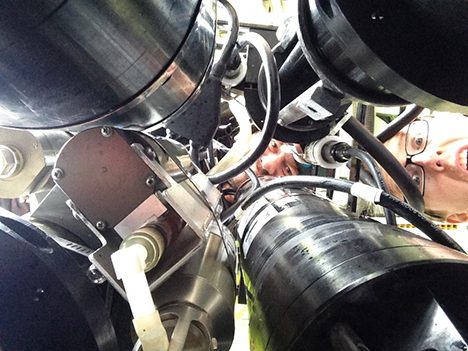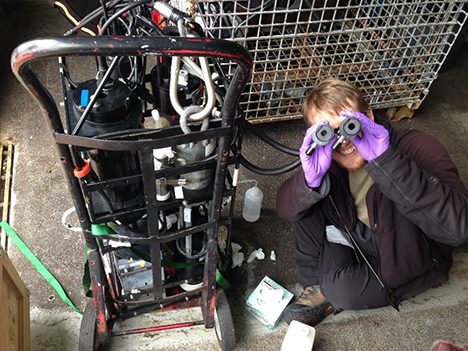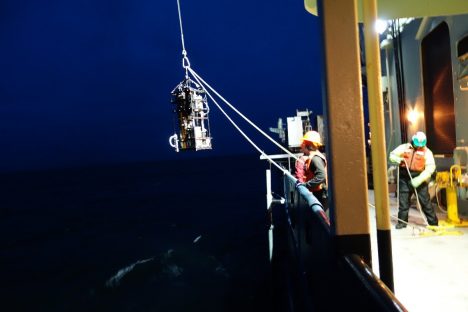The Dark Side of Optics at Sea & The Development of Boat Brain
The old adage of Murphy ’s Law states that: ‘If there is the opportunity for something to go wrong then it will inevitably happen’
Well for all Oceanographic engineers it’s obvious that Murphy spent a considerable amount of time trying to get instruments to work at sea. It seems that sometime during the transition from dryland happy bench testing, to onboard rocking and rolling ocean ops there is an attitude shift in either or both the equipment or the operator.

Inherent Optical Properties-IOP frame and suspicious operators. Photo: Stuart Halewood
Whether it is swapping connections on obviously labelled instrument plugs, to forgetting to actually switch units ‘on’ before sending them into the abyss. To the random erratic behavior of previously rock solid sensors. Murphy pops up in the strangest of places to answer the frustrated cries of ‘but why?’ from the research engineer or scientist.
For the equipment this could be forgiven as now it’s in a new and pretty hostile environment, varying temperatures, high pressure of the ocean depths and someone throws it off the back of a rapidly moving platform without so much as please or thank you.
For the operator the same issues apply except, hopefully not the ocean depth and being thrown into the sea bit! That and the development of what we jokingly call ‘Boat Brain’. The seeming loss of your ability to do the things you’ve done a thousand times before just because you are now surrounded by moving salty water.
The challenge for us is to listen to the instruments, check everything, check it again and then get someone else to check! Take your time and be safe. Rules to follow in every aspect of being at sea.

James Allen checking the Optical Tubes on the IOP frame. Photo: Stuart Halewood
While there is a dark side to us taking measurements at sea with somewhat delicate instruments on a research vessel, there is also literally a dark side to our optical measurements. Contrary to logical sense, we actually deploy one of our optical instrument packages at 10:30 at night! The IOP Package is a specially designed instrument package that uses its own light, in the form of bright LEDs or lasers, to make measurements and record both optical and physical oceanographic data.
We lovingly call it the optical disco ball, because we see many colors of the flashing lights before it gets sent to the depths of oblivion. With the information from this cast, we can check how optical constituents change from daytime to nighttime, when critters migrate great vertical distances to feed.

Night Time deployment of the IOP frame. Photo: Nicholas Huynh
As for what these creatures think of our brightly colored USO (Unidentified Sinking Object) in their midst, we are uncertain but we hope they appreciate the light show.
Written by Stuart Halewood




Fascinating! Murphy is happiest at sea there are so many places to play and jump in. Good luck and looking forward to your results in this field of ocean research.
Thanks for your comments and we did finish the cruise with a good data set even though we got reminded who was boss when the North Atlantic served us up a challenging storm.